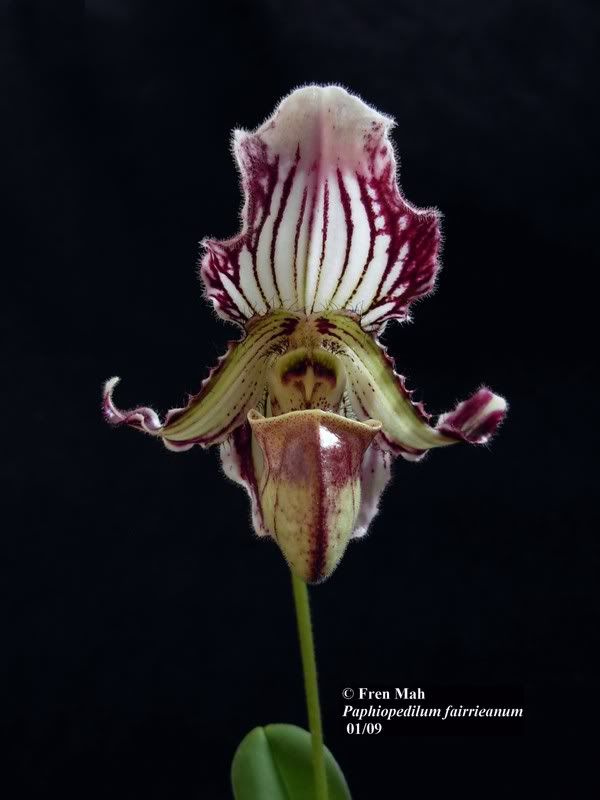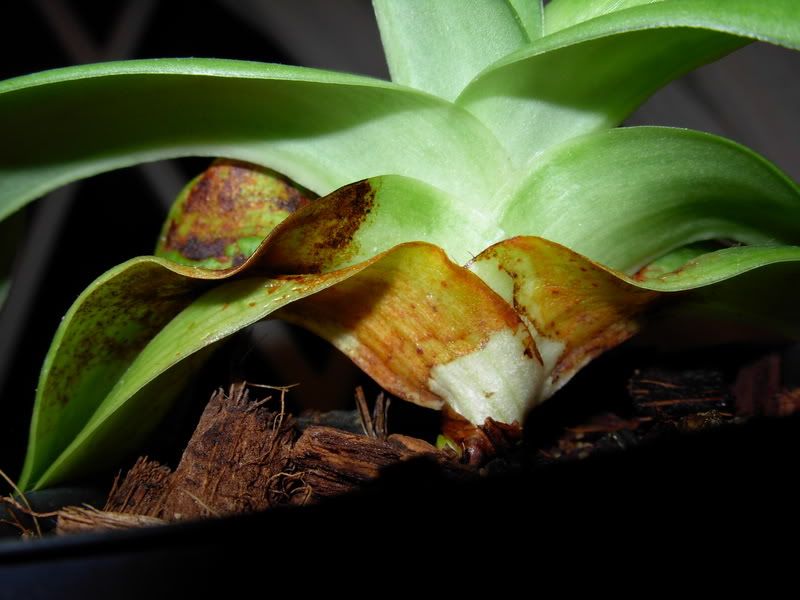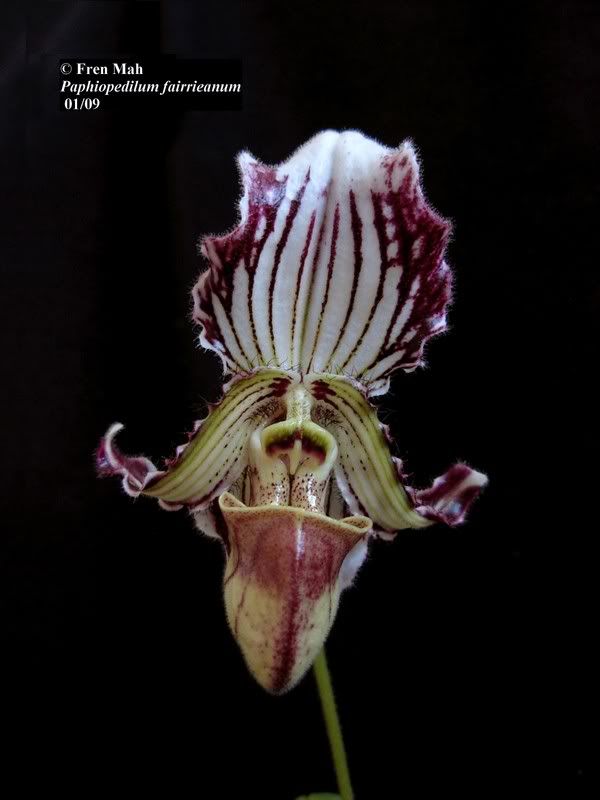The defined leaf edge damage seen here is the result of the leaf being attacked during the stage of growth where it was still emerging, leaving no space where the mites could enter. The damaged area to the leaves above shows where mites had free access, and it is less defined. Well, that is a good point; but then, I would expect the bottom edge to be even more clearly defined and less uneven. Still, considering this does make sense.
If this damage was caused by a systemic fungus or bacteria there would be no such delineation since it would be internal, most likely originating from the basal meristem. Removing leaves when there is latent damage can cause more harm than good. I fail to see the point. The point is to help ensure that the plant is saved and others are not infected. It is my understanding that when a systemic pathogen spreads to the outside of a leaf, it is done in an attempt to spread and infect other plants. So, removal of the "fruiting" portions helps to control and prevent the spread of the disease to other plants. Then, spraying with a systemic is aimed at hopefully eradicating the pathogen that still remains inside the plant tissue. In the winter, it is not uncommon for me to find leaves in the crown of some Paphs and Phrags that have rot inside the leaf tissue. I pull them. I find that the rot almost never goes all the way down to the basal meristem; that is, if I find and pull the leaf soon enough. Sometimes the growing point is damaged or removed in the process of pulling the leaf; but, the plant does get to live to see another day. Being sympodial, it will soon produce a new growth from it's base to replace the damaged one.
Let me say it again: "Rust is a fatal disease. Looks nothing like this. First sign of rust damage is when you see a tiny rust-colored lesion on a leaf margin somewhere. I mean TINY, and by that time your plant is DEAD!" Yup. I got it the first time. Thanks. The problem is; there is information available that conflicts with your statement. I believe it is wise of me to always have an open mind and not blindly accept just one expert's emphatic opinion. You may very well be right; but, I am not an expert and I have no way of confirming your information. So, from a practical point of view, I must consider your opinion with serious regard; but, I will not blindly believe it to be 100% true and undeniable.
I don't know about Canada, but in the US it is illegal to mis-use pesticides. As a California Registered Pesticide Operator I can tell you that there can be serious liabilities when they are mis-applied. Even common sense should dictate that the pest must be identified before the targeted and approved pesticide is applied. If you cannot determine if it is an animal or a plant causing the damage one should seek expert opinion. Guessing is not a sound management practice. Now you're being arrogant and impractical. I did not recommend that anybody mis-use pesticides. Anything available to the general consumer and labelled for use on ornamentals is a reasonable candidate for use on orchids. Plus, I was assuming that the readers would have enough smarts to follow the instuctions provided on the label.....and not need me to tell them this. Also, yes of course, it is best to positively identify the pathogen and tailor the treatment for that specific disease. However, that is not practical in the case of most hobbyists with one or two plants affected....and it is mostly hobbyists who frequent this forum. While I did provide contact information for CFIA, I don't expect that anyone will really follow through with a formal diagnosis and tailored treatment. In the real world, people will weigh the cost to themselves in terms of money and effort against the value of the sick plant in question and in most, if not all (hobbyist), cases, they will opt for the "best educated guess" approach and not go through the formality, inconvenience and expense of a scientific identification. So, while you are basically correct, my comments were more suitable for the real world, where ordinary people are looking for an easy fix. Remember, context counts for a lot here. This forum is not exclusive to academics. It is not part of a formal education in plant diseases and pesticide application. It is a place where orchid growing hobbyists gather and share ideas and experiences. This place will have very little resemblance to a place where one receives a formal education. People here are looking for practical, helpful information. This is about real-world orchid growing for the hobbyist. Expecting that they have every sick plant tested and the disease possitively identified, BEFORE they try any sort of remedy, is simply not practical and it won't be done. Besides, pesticides are expensive. In your enthusiastic oposition of my viewpoint, you really overstep here. The cost of pesticides and whether or not people can or should afford them, is not for you to determine. Plus, I believe that a small package or two of fungicide purchased at a garden centre would cost far less than hiring an accredited laboratory to do a custom investigation and identification of a suspected pathogen. Plus, at the conclusion, the recommended treatment would very likely be a pesticide that is not available to anyone without a pesticide licence. The general public is shut out of being able to acquire and use these products. So, from a hobbyist's point of view, not getting a positive identification; but rather, going straight to a "best guess" treatment with a pesticide that is readily available to them, is the only real choice that they have. In the end, if the plant does not recover, they throw it out and buy something else. The loss does not have the same impact as a commercial grower losing a whole crop.








